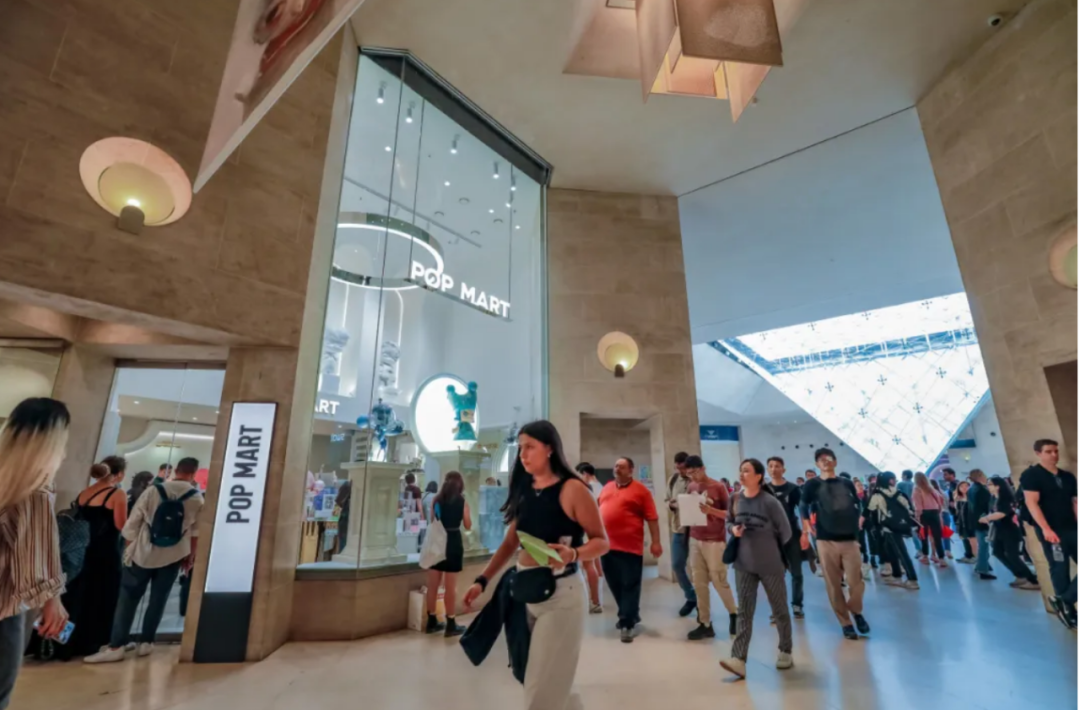Emotional-Driven Business Has Entered its Most Prosperous Era
2025-04-11 16:00:00 | Sweekli
On March 26, 2025, Pop Mart released its full-year financial results for 2024. According to the report, the company achieved a revenue of 13.04 billion CNY in 2024, marking a YOY growth of 106.9%. Net profit reached 3.4 billion CNY, up 185.9% compared to the previous year. A consumer market investor remarked, “Pop Mart had already hinted at its explosive performance in the 2024 interim report, and the market had high expectations, but the actual results went far beyond those expectations.”
In 2024, Pop Mart sustained its exponential growth trajectory, setting new industry benchmarks. Revenue from mainland China reached 7.97 billion CNY, reflecting a 52.3% increase. The company added 38 new physical stores, expanding from 363 to 401, and deployed 110 additional robo-shops, totaling 2,300.
Despite minimal store expansion, physical store revenue soared to 3.83 billion CNY (+43.9% YoY), while robo-shop sales rose 26.4% to 700 million. Operationally, Pop Mart saw notable improvements: gross margin increased to 66.8%, adjusted net margin rose to 26.1%, and inventory turnover days dropped from 133 to 102.

Behind Pop Mart's remarkable revenue growth lies a continually expanding user base. In 2024, the company’s global registered membership surpassed 50 million. Of these, 46.08 million were from mainland China, with 11.73 million newly registered within the year. Membership-driven sales accounted for 92.7% of total revenue, and the member repurchase rate remained steady at 49.4%.
While the market is still digesting Pop Mart’s impressive growth, another industry bombshell came as Miniso revealed plans to spin off its designer toy brand, TOP TOY, for an IPO in Hong Kong.
In 2024, TOP TOY posted 980 million CNY in revenue, growing at a pace of 44.7%, officially joining the “billion-yuan club.” Founder and CEO Sun Yuanwen remarked in an interview that the designer toy sector still holds vast potential.
According to the Designer Toy Industry Development Report (2023) by Xinhua News Agency and the Chinese Academy of Social Sciences, the global designer toy market was estimated at nearly USD 40 billion in 2023, and projected to reach USD 44.8 billion in 2024. In China, the compound annual growth rate (CAGR) from 2022 to 2026 is expected to be 24%, with total retail sales reaching 110.1 billion CNY by 2026.
The designer toy market has clearly entered a golden age.

Over the past year, LABUBU, a signature character from Pop Mart's IP series The Monsters, has undoubtedly become the brand’s new superstar, even surpassing the once-dominant Molly in both popularity and revenue.
Pop Mart actually signed LABUBU as early as 2018, but it wasn’t until 2023, with the release of the soft vinyl plush LABUBU products, that the IP began to gain real traction - culminating in its explosive success in 2024. This journey reflects a long investment and trial cycle, eventually yielding LABUBU’s 3 billion CNY in annual revenue. The risks involved in this process are obvious: identifying a breakout IP among millions, and designing products that capture the spirit of such IPs, requires significant time and experimentation.
Pop Mart’s approach is to continuously sign or develop new IPs, iterate, and wait for a hit. In contrast, TOP TOY partners with globally recognized IPs and reinterprets them through derivative creativity.
Creating a phenomenon-level IP is extremely challenging. That’s why, in the past, we chose to differentiate by focusing on operating globally renowned IPs and reimagining them through new formats, such as blind boxes. TOP TOY’s Tmall flagship store shows that top-selling items are almost exclusively from established names like Disney and Sanrio. Through IP licensing, TOP TOY has built a product catalog with over 11,100 SKUs, including blind boxes, building blocks, figurines, and model kits.
For mature and well-known IPs, TOP TOY can now complete product development and bring items to market in as little as 45 days. If Pop Mart is akin to iOS—vertically integrated with proprietary content—then TOP TOY is more like Android: flexible, open, and fast-moving.
Ultimately, regardless of the strategy, the path for designer toy companies leads back to independent IP development—strategically tailoring different growth trajectories for each IP. Molly, for example, is well-suited to blind boxes, while LABUBU thrives in plush toys. Finding the optimal product expression for each IP unlocks further growth potential.
Pop Mart has taken 15 years to demonstrate that only proprietary IPs can truly endure market cycles. Meanwhile, TOP TOY aims to prove that reinterpreting famous IPs can also open up new frontiers. In this never-ending battle for market leadership, precise strategies in channel expansion, supply chain efficiency, and IP operation are essential at every turn.
